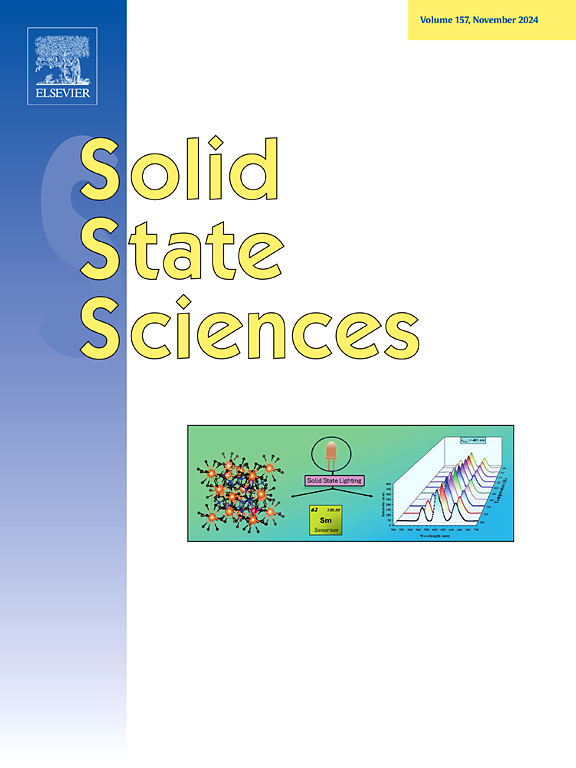高性能非晶硅-铜复合膜负极锂离子电池具有优异的循环稳定性和导电性
IF 3.3
3区 化学
Q2 CHEMISTRY, INORGANIC & NUCLEAR
引用次数: 0
摘要
随着人们对锂离子电池性能要求的不断提高,开发大容量稳定的负极已成为研究重点。非晶硅作为锂离子电池的潜在负极材料,具有较高的理论比容量,但导电性差,体积膨胀大。铜以其卓越的导电性和坚固的机械强度而闻名。利用这些特殊的特性,我们可以有效地提高硅阳极的性能。采用磁控溅射法制备了非晶硅-铜复合薄膜阳极。作为一种新型的锂离子电池负极材料,非晶硅铜复合膜在420 mA/g电流密度下的第一库仑效率为83.30%,循环100 ~ 500次的可逆容量保持率为95.63%。循环500次后的体积膨胀率为176.9%。复合膜的等效电阻约为136欧姆,复合膜具有库仑效率高、循环稳定性好、导电性好等优点,为提高锂离子电池的性能提供了新的思路和途径。本文章由计算机程序翻译,如有差异,请以英文原文为准。

High-performance amorphous silicon - copper composite film anode for lithium-ion batteries with superior cycle stability and conductivity
With the continuous improvement of performance requirements for lithium-ion batteries, developing a high-volume stable anode has become a research priority. Amorphous silicon as a potential anode material for Li-ion batteries has a high theoretical specific capacity, but suffers from poor electrical conductivity and large volume expansion. Copper is renowned for its remarkable electrical conductivity and robust mechanical strength. Harnessing these exceptional properties, we can effectively improve the performance of silicon anodes. Through the magnetron sputtering method, an amorphous silicon - copper composite film anode has been successfully fabricated.
As a new type of anode material for lithium-ion batteries, the amorphous silicon-copper composite film has a first coulombic efficiency of 83.30 % at a current density of 420 mA/g and a reversible capacity retention rate of 95.63 % for 100 to 500 cycles. The volume expansion rate after 500 cycles is 176.9 %. The equivalent resistance of the composite film is about 136 Ohms, and the composite film has the advantages of high coulombic efficiency, good cycle stability, and good electrical conductivity, which provides a new idea and way to improve the performance of lithium-ion batteries.
求助全文
通过发布文献求助,成功后即可免费获取论文全文。
去求助
来源期刊

Solid State Sciences
化学-无机化学与核化学
CiteScore
6.60
自引率
2.90%
发文量
214
审稿时长
27 days
期刊介绍:
Solid State Sciences is the journal for researchers from the broad solid state chemistry and physics community. It publishes key articles on all aspects of solid state synthesis, structure-property relationships, theory and functionalities, in relation with experiments.
Key topics for stand-alone papers and special issues:
-Novel ways of synthesis, inorganic functional materials, including porous and glassy materials, hybrid organic-inorganic compounds and nanomaterials
-Physical properties, emphasizing but not limited to the electrical, magnetical and optical features
-Materials related to information technology and energy and environmental sciences.
The journal publishes feature articles from experts in the field upon invitation.
Solid State Sciences - your gateway to energy-related materials.
 求助内容:
求助内容: 应助结果提醒方式:
应助结果提醒方式:


